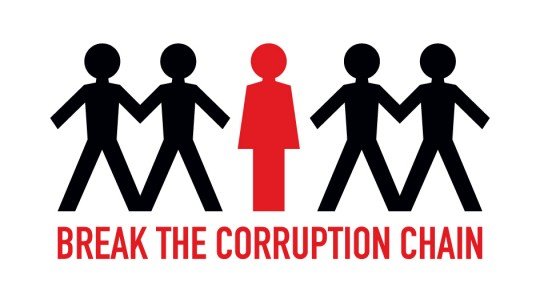A deep look into the Corruption problem around the world. Some important points and events to create a big picture of how corruption work in society.
Corruption, broadly defined as the use of public office for private gain, exists in many forms. Bribery, fraud, extortion, influence peddling, kickbacks, cronyism, nepotism, patronage, embezzlement, vote buying, and election rigging are all examples of actions that fit under that umbrella term. A common response to all forms of corruption is to view them as acts committed by autonomous individuals: a bureaucrat takes a bribe; a traffic cop shakes down a driver; a judge sells his decision.
A focus on deterring individual corrupt acts provides a powerful foundation for reform, yet misses the social element that makes corruption a persistent problem. Corruption in the social sense is a shared belief that using public office to benefit oneself and one’s family and friends is widespread, expected, and tolerated. In other words, corruption can be a social norm. Moreover, it has been the default social norm throughout much of history. Only gradually has the principle of equal treatment for all before the law emerged, and in most states it is still a work in progress.
What Perpetuate Corruption?

It is important to understand how the decision to engage in corruption takes place in the mind of a public official. If people believe that the purpose of obtaining office is to provide one’s family and friends with money, goods, favors, or appointments, then social networks can perpetuate the norm of corruption. Social networks can even serve as a source of punishment for public servants who violate that norm. In Uganda, for instance, reciprocal obligations of kinship and community loyalty may have contributed to a governance outcome in which public officials needed to use their position to benefit their network in order to be regarded as good people. Holders of public positions who did not use their influence to assist friends and relatives risked derision and disrespect.
Even people who privately deplore a norm of corruption might go along with it publicly because of perceived social pressure in support of the system. Since people who express different opinions may find themselves treated as outsiders, they will often choose to express support for the status quo simply to avoid the costs of being different. Thus societies can get stuck in an equilibrium in which corruption is the norm, even though privately much of the population would prefer a clean public service.
Social pressures can force even clean officials to capitulate. In China, for instance, a local official was hounded by villagers who pressured him to accept gifts every time he went home. Told he would be unable to get anything accomplished politically by refusing, the official capitulated. He was later arrested on charges of corruption. Similarly, a study of India between 1976 and 1982 found that refusing to grant favors could subject a public official to complaints filed by constituents. The norm of corruption was so entrenched that the social meaning of an honest official was someone who demanded no more than the going rate as a bribe for providing a public service .
Pressure to engage in corruption often comes from within the bureaucracy. In the Indian example, a highly institutionalized informal system had developed for the purchase of transfers from one position to another, with the price dependent on how much the officeholder could expect to extract from his constituents for providing agricultural services: “By long-established convention, 8½ percent of each contract is kicked back to the officers and clerical staff of the Division—2½ percent to the [executive engineer] . . . 1 percent to the clerical staff and draughtsmen, and 5 percent to the Supervisor and [assistant engineer] to be split between them” . Officials who did not participate risked punishment: supervisors developed a code language to use in reports to the authorities in charge of promotions to indicate officers who were not willing to extract side payments, identifying them as “tactless,” “having no grip over the people,” or “unable to manage” . Those who resisted might be coaxed into compliance with stories about how the bribes received were “gifts” from farmers grateful for how hard they were working on their behalf . Ironically, officials who resisted the system might be threatened with bogus public charges of corruption to encourage them to fall into line .
These types of social expectations can become internalized, as demonstrated in a study that found that when diplomatic immunity meant they had no legal obligation to pay for parking violations in New York City, diplomats from countries where corruption is high had significantly more unpaid fines than those from countries where corruption is low. The finding that country of origin can predict corrupt actions has been replicated and suggests that corruption is at least in part associated with social norms.
Strategies to address corruption

Where corruption is common, acting corruptly may become automatic thinking for officials. If so, an appropriate countermeasure might be to create novel situations to get them to think deliberatively about their behavior and reassess their attitudes and mental models about public service. When a nongovernmental organization (NGO) called 5th Pillar created a zero-rupee note in India with the inscription “I promise to neither accept nor give a bribe” for people to hand out when asked for bribes, one official was supposedly “so stunned to receive the note that he handed back all the bribes he had solicited for providing electricity to a village.” Another “stood up, offered tea to the woman from whom he was trying to extort money, and approved a loan so her granddaughter could go to college” .
Because people behave differently in private from how they behave when they are (or think they are) being observed, transforming opaque corrupt acts into public behavior may exert social pressure on officials to uphold their positions as intended. Low-cost Internet platforms such as ipaidabribe.com, an NGO initiative by Janaagraha in India, have made it easier for citizens to publicize and stigmatize bribery and shame public servants who solicit bribes, although the impact of such social media initiatives has yet to be evaluated. Newspapers also can make corrupt behavior public and empower citizens with information to monitor officials. In Uganda, corruption by officials was so extensive that local schools were receiving only 24 percent, on average, of the central government grants to which they were entitled, until newspapers began publishing the actual amounts the schools were supposed to receive. As a result, average funding received by the schools increased to 80 percent of the entitled amount.
The persistent nature of long-held mental models may make it challenging to convince the public that governance reforms are real. Thus anticorruption campaigns may be more successful when their enforcement is highly conspicuous, especially when public enforcement action is taken against politically powerful individuals widely believed to be above the law. As an example, when the government of Georgia decided to crack down on organized crime, it televised “truckloads of heavily armed police in ski masks round[ing] up high-profile crime bosses”. Social marketing campaigns to advertise anticorruption efforts, as well as targeting areas where the government can achieve “quick wins” of easily observable reductions in corruption, might be another way to build citizen support and start shifting public perceptions. In Georgia, a public relations campaign to advertise the reformed traffic safety police included brand-new uniforms, remodeled police buildings that were open and full of windows to indicate transparency, and television commercials portraying civil servants as good people. As the headline of a magazine article explaining the anticorruption efforts in Georgia noted, the process involved a “mental revolution”. Seeing things differently may be a critical component of doing things differently.
Viewed through a social lens, changing a social norm about corruption constitutes a collective action problem rather than simply the repression of deviant behavior . Establishing social action coalitions to unite and mobilize public and private actors with overlapping political interests is one promising strategy that has been pursued in Ghana and in Bangalore, India. Providing nonmaterial incentives for participation, such as a shared sense of purpose, feelings of solidarity, and public prestige, may be particularly important to sustaining a broad coalition with varied interests. The Internet may make it easier for dispersed interests to organize. In Brazil, the campaign at avaaz.org collected signatures from 3 million citizens and may have encouraged the legislature to pass a bill preventing candidates with criminal records from running for office.
As this Report argues, fostering collective action is not purely a matter of incentivizing self-interested individuals. People can be intrinsically motivated to cooperate and to punish norm violators. In fact, as experimental findings show, “a social norm, especially where there is communication between parties, can work as well or nearly as well at generating cooperative behavior as an externally imposed set of rules and system of monitoring and sanctioning”. Practitioners wishing to fight corruption might therefore wish to experiment with campaigns that emphasize the social norm of clean government.
Community work, @klye ftw!
Congratulations @fabiocortes10! You have received a personal award!
Click on the badge to view your own Board of Honor on SteemitBoard.
For more information about this award, click here
Congratulations @fabiocortes10! You have received a personal award!
Click on the badge to view your Board of Honor.
Do not miss the last post from @steemitboard:
SteemitBoard World Cup Contest - Semi Finals - Day 1
Participate in the SteemitBoard World Cup Contest!
Collect World Cup badges and win free SBD
Support the Gold Sponsors of the contest: @good-karma and @lukestokes
Congratulations @fabiocortes10! You received a personal award!
You can view your badges on your Steem Board and compare to others on the Steem Ranking
Vote for @Steemitboard as a witness to get one more award and increased upvotes!